- Home
- Graham Hancock
The Master Game Page 22
The Master Game Read online
Page 22
You never expect the Spanish Inquisition
When we began this research we did not know ourselves that the famed (but misnamed) ‘Spanish Inquisition’ (subject of a memorable Monty Python sketch) had first been established in April 1233 by Pope Gregory IX. Nor did we know that the original and explicit purpose of the Inquisition was to root out and destroy the Cathar heresy. Building on the repressive structures that had already been firmly laid down in Occitania, the Dominican inquisitors were empowered after 1233 to use virtually any measure they wished to extract confessions and to crush the Cathar faith. They began at once to institute a reign of terror – true and awful terror from which no one was safe.
A chilling example is provided by the behaviour of Raymond de Fauga, the Dominican prior who Pope Gregory IX had appointed as bishop of Toulouse in 1231. A few years later, on 4 August 1235 (by chance the first official feast day for the recently canonised Saint Dominic) de Fauga held Mass at the order's convent in Toulouse and then made his way to the refectory to take dinner with the other monks. While he was washing his hands an informer was admitted bringing him a titbit of hot news from his spy-network. In a nearby house an elderly Cathar lady lay in a fever and close to death. She was a grande dame of a good family and had been visited shortly before by a fugitive perfectus who had given her the consolamentum and then slipped away.50
Annoyingly, it was too late to catch the perfectus. But the old woman wasn't going anywhere! Joyfully seizing the opportunity to bring another sinner to justice de Fauga and his fellow Dominicans, dressed only in monks’ habits, left their dinner and hurried at once to the house pinpointed by the informer. It was very close, in the Rue de l’Olmet sec, and turned out to belong to a certain Peitivin Brosier who had long been suspected as a Cathar sympathiser.51 The dying woman was his mother-in-law, and as the Dominicans brushed past Brosier into her sick room it seems he only had time to warn her that the ‘lord bishop’ was coming. In her fevered state she unfortunately did not understand that he meant the Catholic bishop of Toulouse and mistook de Fauga for a Cathar bishop.52
A horrifying scene then unfolded as the Dominican took advantage of the frail old lady's confusion, spoke to her in familiar dualistic terms ‘about contempt for the world and earthly things’53 and began to question her concerning her faith. Having no reason to suspect that she had fallen into the hands of a skilled and unscrupulous impostor, she innocently revealed all her Cathar beliefs and confirmed the extent of her attachment to them. De Fauga, whose cynicism was bottomless, even carried the charade so far as to urge her to remain steadfast in these beliefs, admonishing her firmly: … the fear of death should not make you confess aught else than that which you hold firmly in your whole heart.54
The old woman's honest reply, as one would expect from a dying credente who had been recently consoled, was that she would certainly not lie about her beliefs, and thus obliterate the benefits of the consolamentum she had received, when there was so little of her life left to her.55 For de Fauga, who had everything he needed, this was the perfect moment to reveal his true identity. Looming over her bed he pronounced her a heretic and ordered her to recant and embrace the Catholic faith.
The old lady was by now fully awake to her predicament and, like many a brave Cathar before her, refused to recant. De Fauga and the other Dominicans insisted that she must. The badgering went on for some time in front of a growing number of witnesses who had crowded in from the neighbourhood, all keen to see how this was going to end. Finally, since his victim ‘persevered with increasing stubbornness in her heretical alliance’,56 de Fauga decided to ‘relax her to the secular arm’ – the Church's usual euphemism for having local civil authorities do the dirty work of executing a heretic.57 In this case, to speed things up, a magistrate had already been called and now legally sentenced the dying woman to death!58
Runners were despatched to prepare a huge fire at the public execution ground, a place called Pre du Comte (the count's meadow), and word of the spectacle was sent out all over Toulouse attracting a large crowd. For the old woman it must have seemed a vision straight from hell, exactly what her beloved Cathar Church had always told her this world was anyway. Since she was quite unable to walk, the Dominicans had ordered her to be tied to her bed. She had then been carried out of her son-in-law's house, bed and all, and brought to this place. Now, after refusing one more chance to recant, she was thrown into the raging flames and burnt alive.
‘This done’, concludes William Pelisson, one of the witnesses to these events and himself a Dominican inquisitor who entirely approved of de Fauga's actions:59 The Bishop, together with the monks and their attendants, returned to the refectory and giving thanks to God and the Blessed Dominic, ate with rejoicing what had been prepared for them.60
One wonders what happened to the old woman's son-in-law, Peitivin Brosier. All we know from Pelisson's cheerful account is that he was arrested.61 Under the rules of the Inquisition in force at the time it is unlikely that he would have survived his subsequent – inevitable – interrogation without recanting the Cathar faith, accepting Catholicism fully and informing on his friends. Even then he would have remained a prisoner in close confinement for the rest of his life. All other members of his family, as well as all his known associates and all members of his wife's family and all their known associates would have been interrogated and their statements cross-referred to detect any inconsistencies that might expose other heretics amongst them.
And of course, since he'd sheltered his mother-in-law – a proven heretic – it goes without saying that his house in the Rue de l’Olmet sec would have been razed to the ground.
That was just the way the Inquisition worked.
Paradox
When William Pelisson concluded his congratulatory report of the trapping and brutal murder of a helpless old lady, he modestly expressed the view that such a great achievement should not be credited to the Dominicans alone: God performed these works … to the glory and praise of His name … to the exaltation of the faith and to the discomfiture of the heretics.62
Reading these sentiments, we find ourselves – not for the first time – overtaken by the sense of a really weird ‘disconnect’ between the words and the deeds of Catholic holy men like Pelisson. He was part of a Christian gang that had just done the most awful thing – something really psychotic and unbelievably cruel – to a fellow human being. But instead of being ashamed of such wickedness, he was proud of it and felt that it glorified his God! Nowhere in the New Testament is it possible to find justification for such behaviour, so which God did he think he was talking about?
Once again the sense of disconnect goes away if we look at the whole scene from a Cathar perspective. Then the vile deeds of the Dominicans make perfect sense. Of course they acted as they did. Of course they took delight in the pain and suffering of the old lady. Theirs was the church of the God of Evil. What else would you expect of them?
We're only half serious … Who's to say that there's even such an entity as ‘God’ at all, let alone Good and Evil Gods? Since there will never be any certainty on such matters this side of the grave, all we can do is weigh up the competing theories and compare them with the behaviour of the participants. When we do that it is clear that Cathar theology provides an internally consistent explanation for why the Catholic Church burnt people at the stake and butchered the populations of whole cities. No such internally consistent explanation is forthcoming from Catholic theology; on the contrary the massacres and the many acts of prolonged, deliberate cruelty that the Catholic Church was responsible for represent a profound and inexplicable paradox when set against the teachings of Christ.
1. The Benben stone of the pyramid of Amen emhet III displayed at the Egyptian Antiquities Museum in Cairo. Note the ‘eyes’ at the centre of the pyramidion, the latter said to have been originally covered with gold leaf.
2. François-Édouard Picot's 1827 painting on the ceiling of Room 30 of the Louvre: L’Etude et le Génie d�
�voilentd Athènes l’Antique Egypte. The ‘unveiled’ Isis on a throne flanked by lions is contemplating a landscape of pyramids and an obelisk.
3. Statue of Giordano Bruno at Campo dei Fiori in Rome.
4. View of the ‘octagonal ellipse’ in the Piazza San Pietro from the roof of the Basilica.
5. Sully Wing Room 26: this is the room that most symbolized the ‘sacred’ union of Anne of Austria and Louis XIII. The wood paneling of the room is from her apartments form Château Vincennes, and on the east wall hangs a portrait of the queen depicted as ‘Minerva’. Facing the queen is a 7. portrait of Louis XIII. Between them has recently been placed a statue of the Egyptian God Amun of Thebes/Luxor.
6. A Knight Temp tar, showing the croix pattée that characterized order, and the octagonal frame within which it can be imposed.
7 Here is seen the very ancient goddess and queen of the Egyptians’, etching from the fifteenth century. Note the boat and the ‘dog’ on the standard representing the ‘Dog Star’ Sirius.
8. Coat-of-arms of Paris, fifteenth century.
9. The coat-of-arms of Paris commissioned by Napoleon in 1811, showing Isis on the prow of the boat and her star, Sirius, leading the way. Note the three bees of ‘Charlemagne’ to symbolize imperial solar royalty. Also note the Hermetic caduceus piercing the crown supporting the imperial eagle.
10. A reconstruction map of the region of Paris before the city was built, showing the location of the Temple of Isis (where the Abbey of Saint-Germain-des-Prés now stands). The region, some sixteenth-century historians claimed, was thus known as ‘near the Temple of Isis’, hence the ‘Isi’ in ‘Parisi’.
11. Occitania. Inset shows relevant portion of modern France.
12. Aerial view the Louvre looking east. Note the Historical Axis passing through the equestrian statute of Louis XIV (as ‘Alexander the Great’), then through the south flank of the Cour Carr6e and extending towards the horizon where the rising of Sirius took place. Note the ‘boat’ shape of the Île de la Cité on the right.
13. Aerial view of the Historical Axis of Paris looking west from the Louvre towards La Défense on the distant horizon. Note the deviation of the axis.
14. Sunset on 6 August along the Historical Axis (Champs-Élysées). This date is the feast of the Transfiguration of Christ, here clearly evoking solar symbolism also linked to Louis XIV, the Sun King, under whose reign the Historical Axis was first defined.
15. Winter solstice sunrise at Karnak-Thebes along main axis. Compare to sunset in Paris along the Champs-Élysées on 6 August (see left). The orientation is 26.5 degrees from the latitude at both locations.
16. Sunset on 6 August along the Historical Axis (Avenue de la Grande Armée). The Grande Arche is, however, turned 32 degrees from due west such that the sun will be in the centre of the arch on 24 Freemasons as the ‘New Year’ (see right).
17. View of the Grande Arche looking east. The 6 degrees deviation of the Grande Arche's axis produces an orientation Of 32 degrees north-of-west towards the sunset horizon, matching the sunset on 24 June (see left).
18. The equestrian statue of Louis XIV as ‘Alexander the Great’. The legend that Alexander was the son of Amun, the supreme sun-god of Egypt at Thebes (modern Luxor), was well known to classical scholars in the seventeenth century, and it is no surprise that Louis XIV, who insisted on being seen as the ‘Sun King’, was often depicted in art as Alexander the Great or Apollo.
19. Revolutionary etch in g showing Voltaire (left) and Rousseau (right) introducing the Supreme Beingto the French people, a blazing sun (known also as a ‘glory’) instead of a triangle or pyramid.
20. The ‘eye in the pyramid’ on the frontispiece of the Declaration of the Rights of Man and the Citizen, drafted in August 1789.
21. The reverse motif of the Great Seal of the same motif also can be seen on the US one-dollar bill.
22. August 1793. The so-called ‘Fountain of Regeneration’ (also known as ‘Isis of the Bastille’). This was a statue of the Egyptian goddess Isis with water sprouting from her nipples. The president of the National Convention is filling his cup with the ‘regenerative’ liquid symbolizing the new order, social and religious, for the French Republic, while the revolutionary crowds cheer.
23. August 1793: a ‘pyramid’ outside the Hôtel de Ville in Paris in honour of the Supreme Being.
24. An etching in the journal Le Franc-Maçon showing the Empress Joséphine in her Masonic regalia at the ceremony of ‘Adoption des Francs-Chevatiers’ at a lodge in Strasbourg in 18°3. The ditty translates as: ‘My Brothers and Sisters,‘ says the lovely companion of the great Napoleon, this other Charlemagne, ‘my husband spoke true when he said that the examples and lessons of virtue and honour come from Freemasons.’
25. Head of Cybele/Isis found in Paris in 1675 in the St. Eustache gardens. It probably dates from the Antonine period and was brought from Italy. Compare the tourelle on the head of the goddess to that on the Arc de Triomphe, Place de l’Étoile.
26. A goddess placing the imperial laurels on Napoleon, and at his feet another goddess wearing the tourelle of Cybele/lsis.
27. The goddess Isis on the façade of the Louvre looking east at the rising sun in the Cour Napoléon.
28 The Loge Bonaparte (1853), one of many Masonic lodges bearing the name of Napoleon, showing Napoleon and Joachim Murat in Masonic regalia. The caption at the top reads ‘Where the laws of Freemasonry rule, also rules Happiness’.
29. Revolutionary etching showing Napoleon introducing the Supreme Being to all religious groups. Note the Giza pyramids on the top register.
30. The ‘missing’ obelis kat the temple of Luxor.
31. The obelisk of the Concorde that once stood outside the temple of Luxor.
Making hell on earth
Every year from 1233 onwards, this impossible paradox of gentle Christ and brutal Church was repeatedly reinforced by the Inquisition. The first two official inquisitors in Occitania, Peter Seila and William Arnold, both of whom were recruited from amongst the Dominicans of Toulouse, were appointed by Pope Gregory IX in late 1233.63 Like all natural bureaucracies with high-level backing the Inquisition grew unrestrainedly. By the end of the decade numerous different teams of inquisitors like Seila and Arnold were at work throughout Occitania interrogating, cross-referencing, condemning and burning. From the beginning they were a law unto themselves, independent both of the bishops and the civil authorities, with unlimited authority to act against heretics.
Their standard methodology was deliberately intimidating, designed to spread terror in any community they descended upon and to ‘drive a wedge into the façade of community solidarity, so that the loyalties and fears which had held it together could be undermined.’64 Task forces, typically led by one or two inquisitors supported by an attendant band of soldiers, clerks and magistrates, roamed the land going from village to village, town to town, city to city. The idea, was that each unit should be self-sufficient as detective, gaoler, judge, jury and executioner, identifying suspected heretics and ‘processing’ them from freedom either to repentance or the stake in as short a time as possible.
Methods of operation were constantly refined in response to the latest evasions and escape plans of the heretics, although by the 1240s large parts of the procedure had been standardised and written up by the Dominicans in a series of detailed technical manuals. From these we learn that in each parish the Inquistion would begin with a public meeting which the entire local community would be required to attend. Once everyone was assembled the inquisitor would appear and address them with a general sermon condemning the Cathar heresy. Then notice was served on all males over 14 and all females over 12 (‘or younger if perchance they shall have been guilty of an offence’)65 to appear individually before the inquisitor over the coming days. If no previous inquisition had visited the parish an announcement would be made granting: … indulgence from imprisonment to all from that place who have not been cited by name or who have not yet earne
d the indulgence, if within a specified time, they come voluntarily as penitents to tell the exact and full truth about themselves and about others.66
In other words, those who pre-emptively informed on themselves or others, and were willing to recant their heresy, would earn exemption from punishment, perhaps even escape punishment altogether. By contrast those who knew something – anything – and decided to keep quiet about it were taking an immense risk that their neighbours or friends might inform on them. If that were to happen they would be judged to have misled the Inquisition – an offence for which extreme penalties applied.67 In such circumstances, notes the historian Martin Barber: The temptation to denounce others was almost overwhelming, if only for defensive reasons … In a community that had had frequent contact with heretics … nobody was likely to be innocent in the eyes of the Church, and therefore anybody could have been written into the Inquisitors’ copious records.68

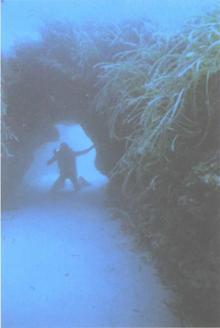 Underworld: The Mysterious Origins of Civilization
Underworld: The Mysterious Origins of Civilization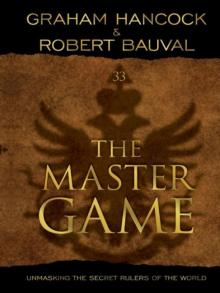 The Master Game: Unmasking the Secret Rulers of the World
The Master Game: Unmasking the Secret Rulers of the World America Before
America Before Entangled
Entangled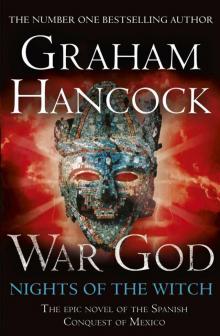 War God: Nights of the Witch
War God: Nights of the Witch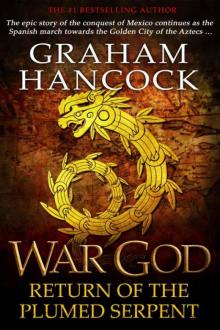 War God: Return of the Plumed Serpent
War God: Return of the Plumed Serpent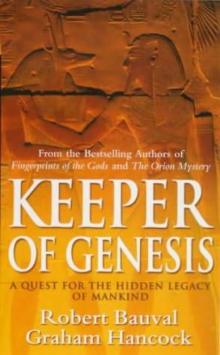 The Message of the Sphinx AKA Keeper of Genesis
The Message of the Sphinx AKA Keeper of Genesis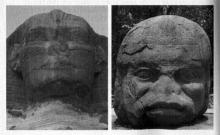 Fingerprints of the Gods
Fingerprints of the Gods The Sign and the Seal
The Sign and the Seal The Mars Mystery: The Secret Connection Between Earth and the Red Planet
The Mars Mystery: The Secret Connection Between Earth and the Red Planet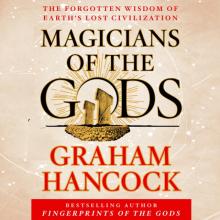 Magicians of the Gods: The Forgotten Wisdom of Earth's Lost Civilization
Magicians of the Gods: The Forgotten Wisdom of Earth's Lost Civilization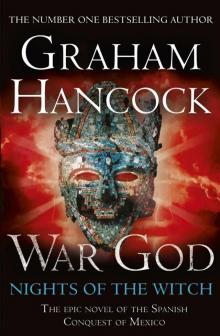 War God
War God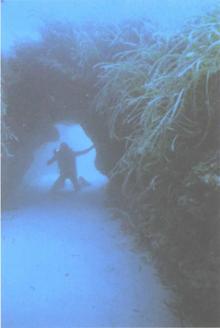 Underworld
Underworld The Mars Mystery
The Mars Mystery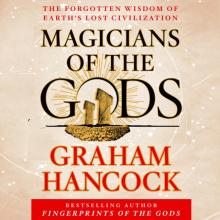 Magicians of the Gods
Magicians of the Gods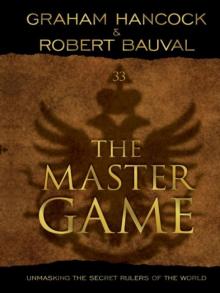 The Master Game
The Master Game